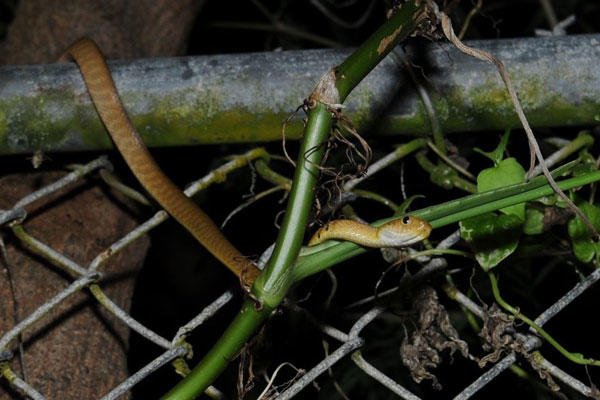In the latest effort to eradicate brown snakes that are doing damage to Guam's power grid, thousands of poison-laden dead mice are being airdropped onto the island's trees, where officials expect they'll be eaten by the snakes.
The bait drop is the fourth one that the U.S. has conducted to kill off brown tree snakes that, according to the U.S. Department of Agriculture, damage the island's electrical grid at a cost of up to $4 million a year in lost productivity because of outages.
Dan Vice, a Wildlife Service's biologist with the USDA who has worked on the eradication projects for more than 10 years, told Pacific Daily News that each bait mouse carries 80 mg of acetaminophen -- the principal ingredient used in Tylenol.
"The risk to non-targets is slight," he told the paper. "It would take 500 baits to kill a pig [or dog and] 15 baits to kill a cat."
The efforts to eradicate the snakes, an operation that NBC reports will cost $8 million, are a joint program of the USDA, the Interior Department, and the Defense Department.
How much of a role the Air Force played in the airborne mice assault could not be determined by press time. The Air Force press desk had no information and there was no reply from U.S. Air Forces Pacific Command.
On Monday, helicopters airdropped about 2,000 mice using small, cardboard parachutes over two test areas on Andersen Air Force Base, which has been regularly hit with power outages because of the snakes.
Later, some officials traipsed into the drop-zones, which totaled about 136 acres, in search of tiny radios that had been also implanted in some of the mice, according to Pacific Daily News. These radios help the USDA to track the snakes' movements.
Vice said USDA also tracks small animal and rodent populations, which will increase if efforts to reduce the brown tree snake populations succeed.
"If it proves to be successful then we may potentially start ramping up the efforts and doing this on a larger basis across more of Guam," Vice told the paper.
The brown tree snakes are believed to have arrived on the island in the 1950s in a poorly inspected cargo shipment.





























